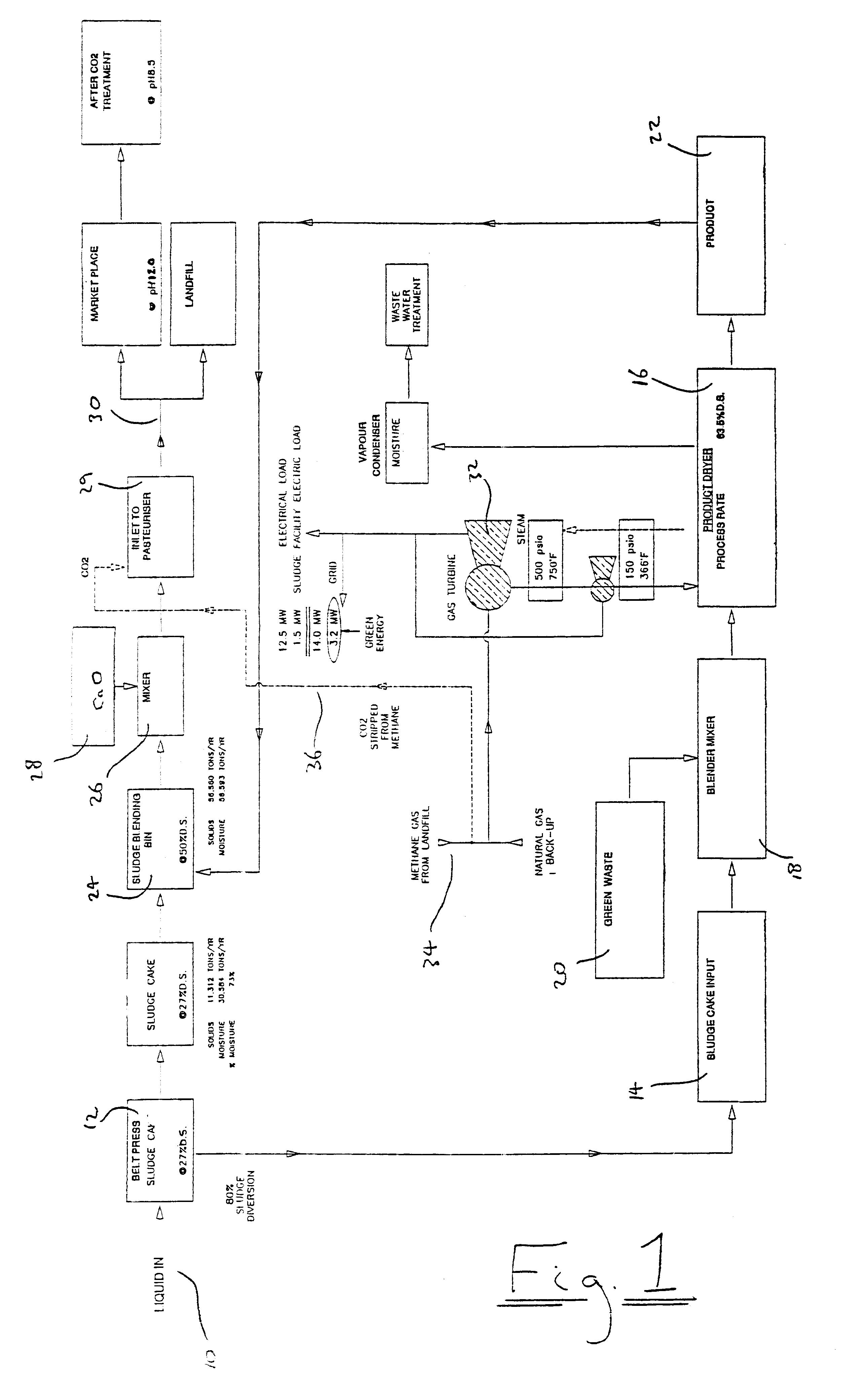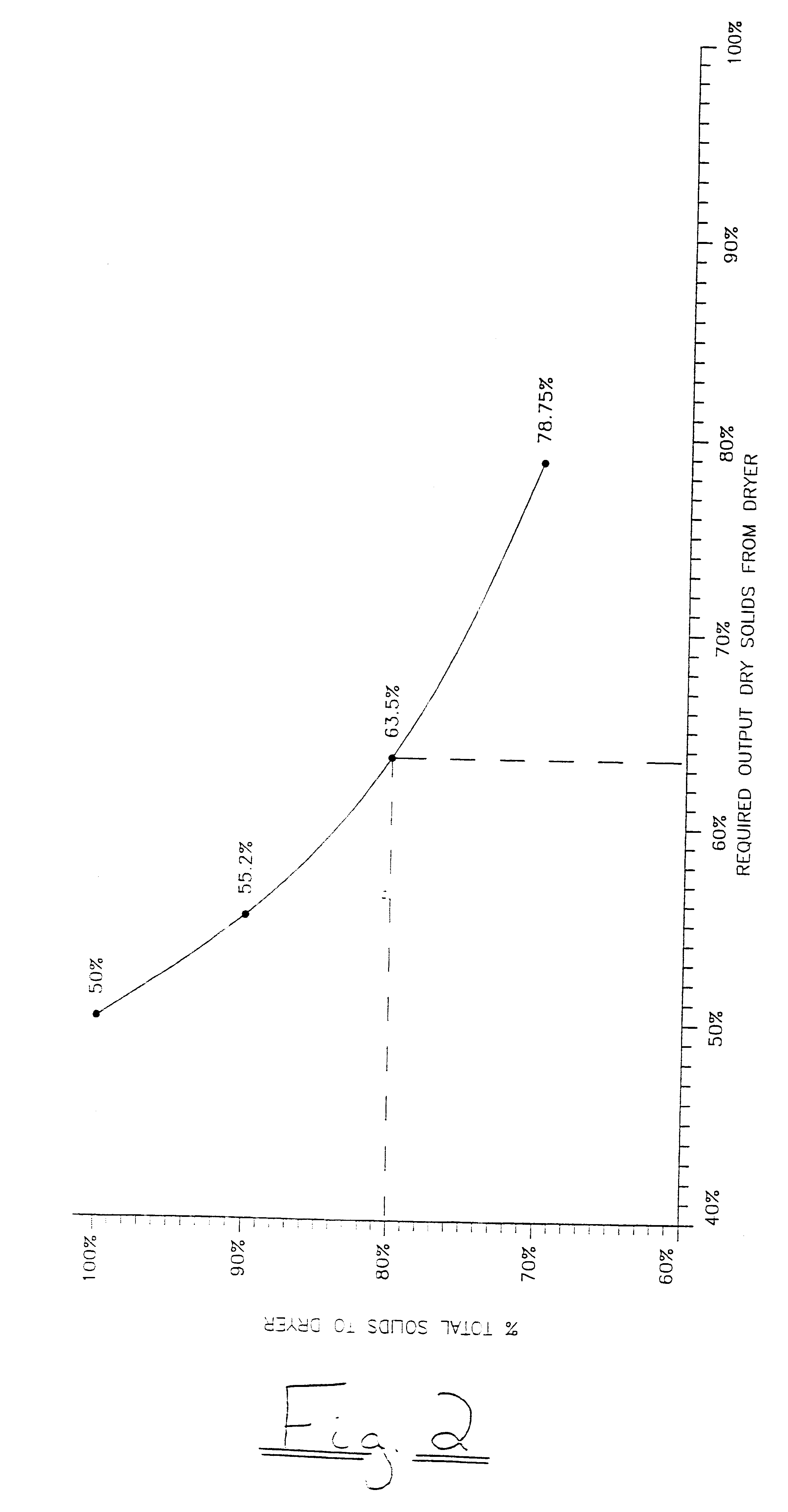Processes and apparatus for treating sewage or like sludge
a technology of sewage or like sludge and processing equipment, which is applied in the direction of multi-stage water/sewage treatment, other chemical processes, separation processes, etc., can solve the problems of slow drying method, labour intensive and labor intensive methods described in these two specifications
- Summary
- Abstract
- Description
- Claims
- Application Information
AI Technical Summary
Benefits of technology
Problems solved by technology
Method used
Image
Examples
Embodiment Construction
FIG. 1 depicts an embodiment of the process of the present invention. Liquid sewage is introduced to the process at 10, the sewage being dewatered using a belt press system 12 to produce a sludge cake. Typically, the dry solids content of the sludge cake is ca. 27%. After dewatering, the sludge cake is separated / divided into first and second portions. It should be noted that in a batchwise process this division will produce discrete portions. However, as described more filly below, continuous or near continuous processing is also possible, in which instance the two portions will constitute different "streams" of sludge cake.
The first portion is transported by a transportation system 14 to a dryer 16. The transportation system can comprise known means such as belt conveyors and discharge ploughs, as well as infra-red moisture sensors and weigh belt systems providing continuous monitoring. Optionally, the first portion can enter a blender 18 where green waste 20 such as grass clipping...
PUM
| Property | Measurement | Unit |
|---|---|---|
| Fraction | aaaaa | aaaaa |
| Fraction | aaaaa | aaaaa |
| Fraction | aaaaa | aaaaa |
Abstract
Description
Claims
Application Information
 Login to View More
Login to View More - R&D
- Intellectual Property
- Life Sciences
- Materials
- Tech Scout
- Unparalleled Data Quality
- Higher Quality Content
- 60% Fewer Hallucinations
Browse by: Latest US Patents, China's latest patents, Technical Efficacy Thesaurus, Application Domain, Technology Topic, Popular Technical Reports.
© 2025 PatSnap. All rights reserved.Legal|Privacy policy|Modern Slavery Act Transparency Statement|Sitemap|About US| Contact US: help@patsnap.com



